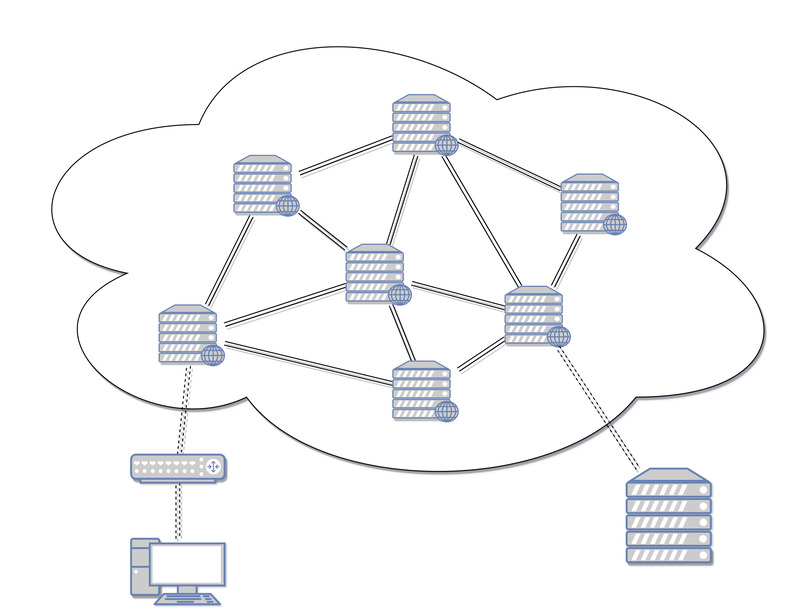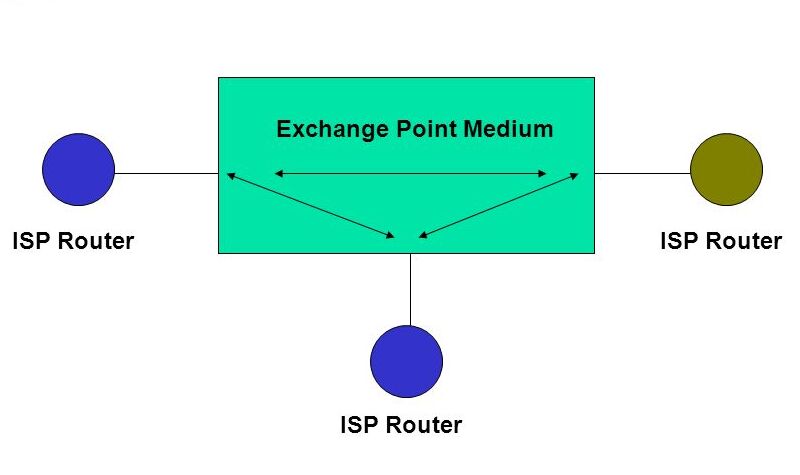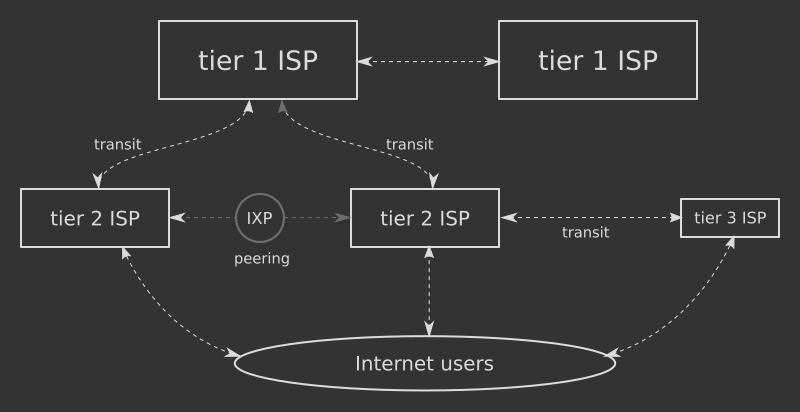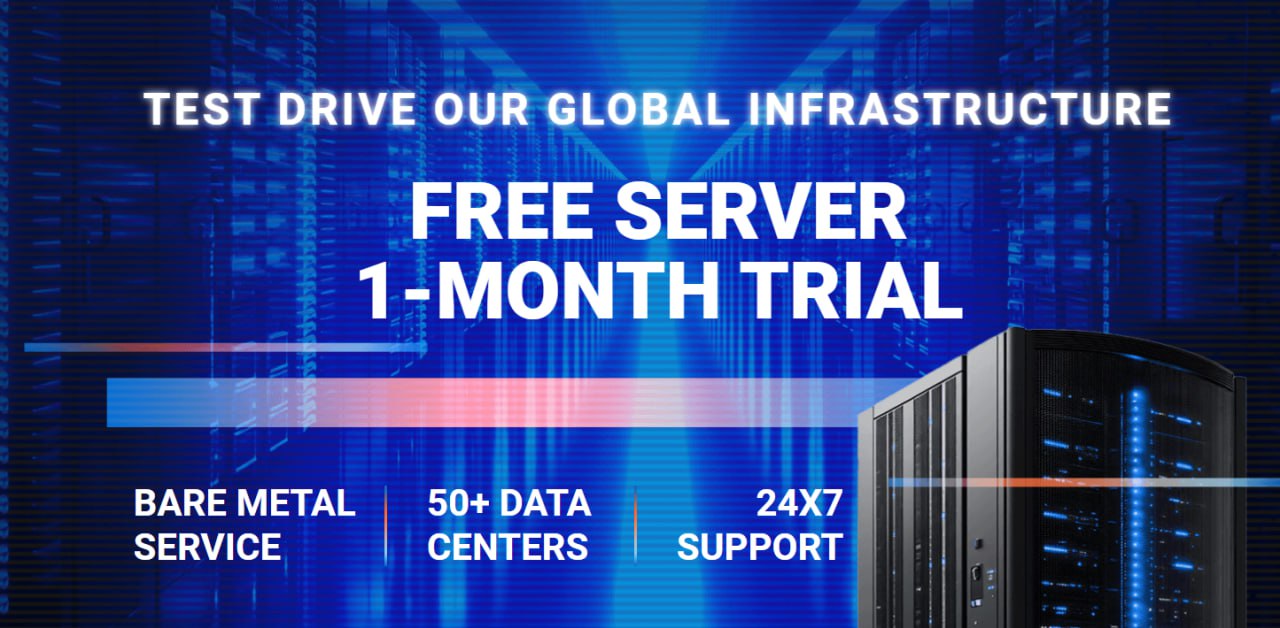IPTP short guide to IX transit

IX transit is one of the top common things that confuse our customers. So here’s what you need to know, a short guide from IX definition to how IX transit works.

What is IX Transit
IX Definition
To understand IX Transit, first, you must know about IX (Internet Exchange) or IXP (Internet Exchange Point).
An IXP serves as a point of connection – also known as a public peering location – between different Internet Service Providers (ISPs). The core job of ISP is to allow all their customers access everywhere on the Internet. Due to the vast amount of countries and consumers, interconnection is a basic necessity.
The IXP must be located in a colocation facility that can provide power and cooling to its devices. Data centres also sponsor IXP where ISPs arrange the cable connections. Alternatively, they can have a patch panel service, but the core of an IXP is the L2 switching fabric. There is also security and a technical community of specialists to run and maintain the IXP.
IX Transit definition
The Internet is made up of different and distinct networks known as autonomous systems, each with its own set of globally unique IP addresses and global BGP routing policies. IX Transit is one of the interconnect agreements that exist between Internet networks as a way for these networks to connect and exchange data with each other.
How it works
The “Internet” is a collection of networks run by various organizations. IPTP has a network. You have a network. Together, we inter–network. Result in the “Internet”. The service of carrying one network traffic to another network is “transit”.

The one that does these transits is “Internet Service Provider” (ISP). Essentially, you pay your ISP to send your packets (of data) or deliver them back to you. In other words, ISP offers access to the Internet. While most ISPs control a part of the physical network (fiber, cable lines, etc.), some do not. Those that do, can make use of their network’s scale to make arrangements with other ISPs.
Transit & Peering
The two forms of interconnection between networks are: transit and peering.
“Peering” is a data exchange between two ISPs. When the amount of data shared is generally near to equal, peering is settlement-free if agreed. This means no money changes hands for the traffic exchanged. Paid peering is an option that demands a monthly charge in case ISPs cannot agree on the settlement-free traffic exchange.
The birth of IX Transit
As a rule of thumb, networks want to peer with as many same-level members as possible to reduce transit costs and improve latency. But there is still the problem of running a cable from your network to your peer’s network to make a connection. So, peering with many networks can still add up the expense quite a lot.
Thus, to peer with a large number of other networks, IXP is the answer.
An IXP is a place where members’ networks can connect and exchange Internet traffic. IXPs are used as hubs with connections to many networks at one single or multiple locations. It is easier for an ISP to have a presence at several IXPs and run circuits to whomever they wish to exchange traffic inside those IXPs.

The “Transit” service, where the traffic travels over IXP’s L2 fabrics to reach other ISPs, leads to the name “IX transit”. IX transit allows traffic to reach peers and downstream of your upstream ISP for optimal latency.
The benefits of IX transit
IX transit keeps traffic local, allowing the peering networks to communicate faster. Since traffic is exchanged directly rather than through a third party, it also could reduce the high costs of IP transit. Some IXPs demand expensive setup fees for new participants or monthly/annual operating fees for their members. Depending on the location and circumstances, the cost could be much more efficient than IP transit. However, IX transit primarily enhances the user experience by reducing latency to popular resources like game servers, entertainment media resources, etc.
IX transit provides greater control over traffic flows. When there is something wrong with any particular IXP by setting up proper BGP communities you will be able to isolate problems or congestion on your own. No more stuck and waiting for your ISP to FIX a problem.
Is IX transit the same as IP transit?
What is IP Transit?
As stated before, besides Peering, Transit is another form of interconnection between the Internet networks.
Typically, small ISPs prefer to peer with everyone, but large ISPs only want to connect with other similar size ISPs. If the small networks want to connect to other networks on the internet, they have to pay for the bigger networks. In this case, it is “IP transit” and not a peering relationship.
“IP Transit” is when one ISP pays another for the privilege to transit its traffic on the upstream network.
These two types of interconnection also indicate the network hierarchies. Think of the Internet traffic flows like a waterfall, with upstream and downstream. When traffic flows downstream, it travels from a bigger network (on a higher hierarchy) to a smaller network (lower hierarchy). When the traffic needs to go upstream, then the smaller network has to pay the bigger network to get carried.

IP Transit vs. IX Transit
Is IX Transit the same as IP Transit?
The short answer is: No, they are not the same. IP Transit can connect the providers from upstream, downstream, or peer. IX Transit only connects downstream and peers. Basically, IX Transit connects to anything besides upstreams.
The longer answer is: IX Transit is different from IP Transit in a way that IX Transit is a part of IP Transit.
With IX Transit, end-users only received peering routes, which include providers’ own routes, as well as routes that belong to their customers and peering partners. IX Transit does not connect to Tier-1 providers, so the number of routes that traffic can travel is smaller than the entire Internet.
IP transit is similar to IX transit, except the IP transit allows for more routes. In addition to the provider’s own, peers’ and customers’ routes, IP Transit can also supply end-users with routes from upstream ISPs. The BGP table of IP Transit consists of the entire Internet, so end-users can reach any address on the Internet via IP transit.
You can think of IP Transit as an ‘IX Transit-plus-more’ service. Of course, the price for IP Transit is generally also ‘more’. As the provider in the IP Transit case most likely needs to act as a middleman and pay Tier-1 ISPs to carry the traffic on their routes.
What is right for you?
So if your enterprise decides to go global, having access to your desired region networks is quite important. The question here is which type of transit will be the most beneficial for you. Should you go with IP transit to gain access to the entire Internet, or choose IX transit for all the benefits? To answer that, there are also some other factors you should also consider:
– How much traffic do you have?
– How much is your budget for transit?
– Do you prefer to be hands-on with your traffic routing or would you rather let someone else take care of it?
– Is latency and speed essential to you?
– Is it important to you to keep traffic local?
Feeling dizzy yet?
Contact IPTP to find out the ideal Internet solution for your company. We provide a wide range of corporate internet services to suit all needs and budgets.
Read more about IPTP Networks IX transit service. Or check out our Remote IX service for an even more advantageous solution.
Need some help to make the right decision? Contact us via Live Assistant or send an email to:
